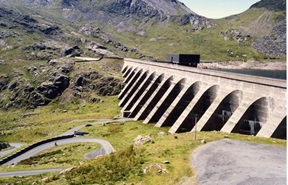Change.inc devoted an article to thermal industrial heating and cooling (in Dutch). Long neglected in views on the energy transition. Even though there is a lot of energy involved. But now, this has been analysed by analysts of Rubio Impact Ventures.

In Europe, industry consumes about one quarter of total energy use. Moreover, this is almost exclusively produced by fossil fuels. Yearly emissions of the European industry amount to more than 500 million tons of CO2. Most energy is spent on high-temperature processes, generated by natural gas and coal – difficult to substitute. We can generate low temperature heat (up to 200oC) with green electricity or concentrated solar energy; but this will be difficult for higher temperatures. How can we transit here to a new energy system?
Industrial heat storage
Change.inc expects that a lot can be done with industrial heat storage. In this technique, we store heat to be used at a later moment. There are three techniques that can do this, in their order of availability:
- Tactile: by heating sand, cobbles or other compounds
- Latent: by use of phase-changing materials
- Thermochemical: through chemical reactions in for instance salt solutions.
According to Rubio, the combination of sustainable sources and heat storage can deliver more than 50% of the energy use in the intensive industries. This would relieve the iron, steel, cement and chemical industries from having to change fundamentally. Moreover, there is a major potential of course in low-temperature heat, like in space heating. Costs do differ a lot, depending on technique and application.
Storage using tangible heat
In this technique, we heat up materials like sand or salt; heat that we can reuse as required.
- Temperature range: 0 to 1,000oC
- Cost: € 0,10 to 35 per kilowatt-hour
- Degree of maturity: commercially proven
This is a cheap and relatively mature technology, already used on a commercial scale. Even though storage of tangible heat is difficult, it leaks away and should be used quickly in principle.
Latent storage
Latent energy storage makes use of the energy stored or released upon a phase change (for instance from liquid to solid).
- Temperature range: -100 to 1,000oC
- Cost: € 60 to 230 per kilowatt-hour
- Degree of maturity: technology needs to be scaled up.
To the substances used in such phase changes belong CO2 and liquid metals. Therefore, this technology is restricted to the temperature at which the phase change takes place. On the other hand, the energy density of such a system is high, and therefore the equipment can be relatively small.
Thermochemical storage
Thermochemical storage stores heat from a reversible reaction between two (or more) substances. Thermochemical storage differs from classical batteries and fuels in this respect, that the primary input also consists of heat – instead of a ‘higher’ energy form like electricity or hydrogen.
- Temperature range: 50 to 1,800oC
- Cost: as yet unknown
- Degree of maturity: early research.
Potentially, thermochemistry has the highest energy density of all technologies. Moreover, this technology can deliver the highest temperatures (more than 1,000oC); temperatures required for processes like cement and steel production. But this still needs a lot of research.

Market and competition
The potential is huge. Just for Europe, this is estimated to be € 200 billion. But at present, only tangible heat storage can compete with direct energy use; and because this process requires major investments, this process could well grind to a halt. Even though there are subsidies and legislation in place to keep the process going.
In this field, the more difficult substitutions will carry the most gain. This is particularly true for processes that require temperatures higher than 200 to 500oC; precisely the processes that are most difficult to substitute. To which we must add that many of these processes are of a large scale, and therefore need a capacity of sufficient size to replace them. Rubio is of the opinion that a substitute process should have a pay-back time of 5 to 8 years, with an absolute maximum of 10 years.
Conditions
In the ideal case, the substitute process is adequately large-scale. The effect is more pronounced if the process can attain temperatures of 500oC or more. And of course, cost should be kept low. Commercially speaking, the company involved should be able to carry the high initial costs. Summing up, conditions so far fulfilled by just a few, if any, substitute processes.
Interesting? Then also read:
Energy storage will accelerate the transition
Cheap energy storage speeds up
Energy storage, its role in the transition
